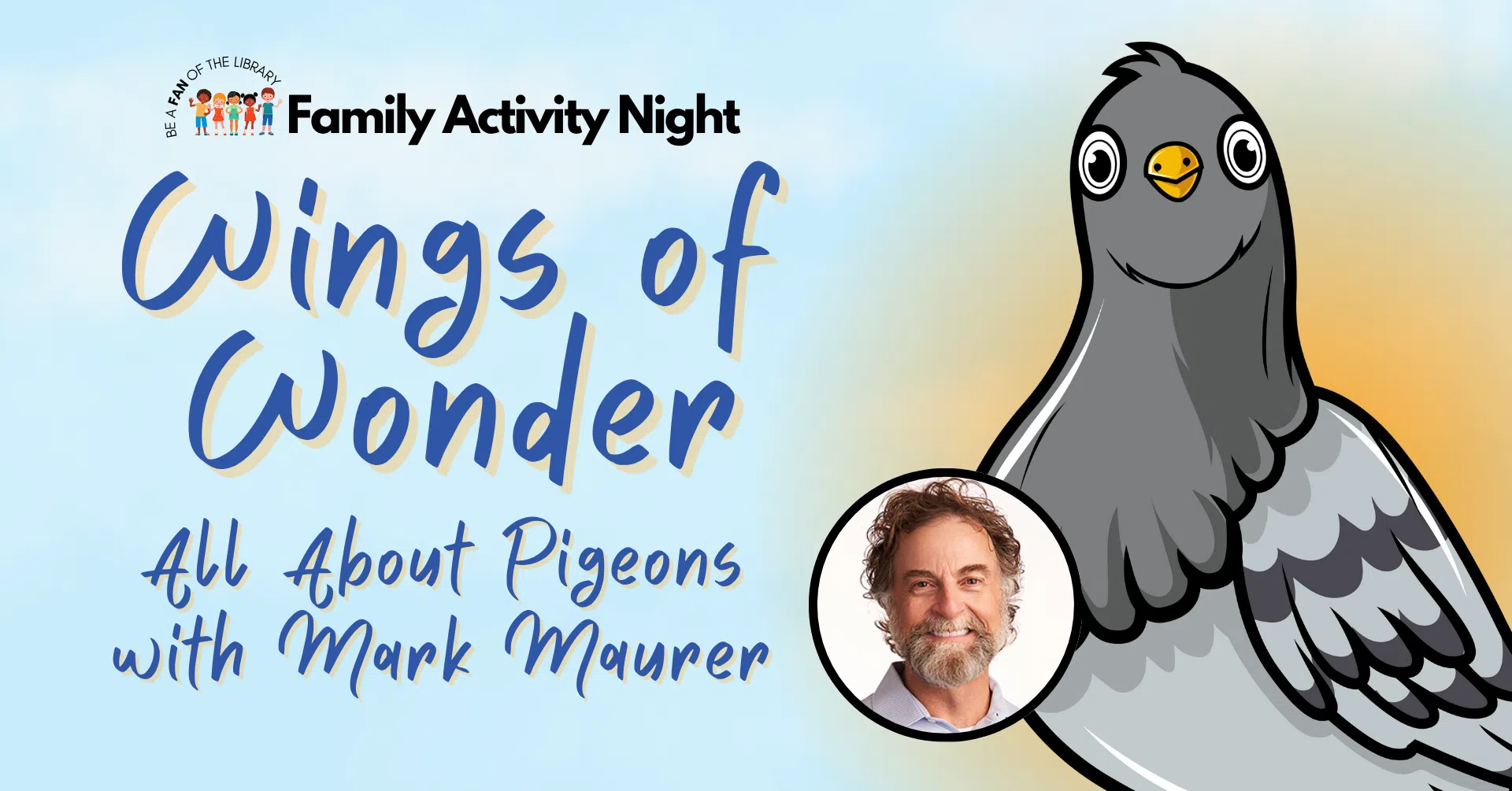The following article was written by Family Activity Night Presenter and Pigeon Enthusiast, Mark Maurer.
The homing pigeon, also known as the rock dove, has long been both reviled and revered. Often dismissed as “vermin with wings,” these birds are commonly seen as pests competing for scraps in public spaces. What many people don’t realize, however, is the historically vital role pigeons have played throughout human history.
Ancient civilizations such as the Egyptians, Greeks, and Romans used homing pigeons to carry messages. Even Reuters News relied on them in the early 1900s. During both World War I and World War II, homing pigeons were crucial to military communications. Two of the most famous birds—Cher Ami and G.I. Joe—are credited with saving hundreds of lives.
So, when I mention in conversation that I’ve spent the past 25 years raising and racing homing pigeons—birds that have flown 100, 200, even 500 plus miles in a single day, often averaging 40–45 MPH and sometimes exceeding 60 MPH with favorable winds—people take notice. And they’re intrigued.
I’m always happy to share my perspective on this remarkable one-pound bird, equipped with a compass-map navigation system that scientists still don’t fully understand. They are not “nuisances”—they’re elite athletes of the sky with a legacy that deserves far more respect.
The conversation usually begins with me sharing how I grew up in Sheboygan Falls and became fascinated with pigeons around the age of ten. My neighborhood friends and I would catch wild young pigeons and raise them in a makeshift coop. Eventually, after some persistent pleading, my parents agreed to a more permanent setup—and my grandfather built a small coop attached to our garage. At ten years old, I was unofficially a “pigeon fancier.”

Mark Mauer
Over the next few years, I kept about a dozen pigeons. Some were given to me young enough to be “settled” or “re-homed” in my loft, while others were the offspring of my own birds. I never raced them or joined a pigeon club, but caring for them and taking them on short training flights with my dad brought me a lot of joy. It also gave my friends—whose parents weren’t quite as indulgent—a chance to share in the fun.
Eventually, teenage life took over. My time shifted to sports, school, and girls. But, as I would later learn, once you catch the pigeon bug, it never really leaves you.
For the past 25+ years, I’ve been breeding, raising, and racing homing pigeons. And in all that time, I’ve never stopped learning—or marveling—at them. Watching a tightly formed flock soar around the neighborhood on a windy day, banking against the gusts and whooshing over rooftops at what must be close to 70 MPH, is a spectacle. I still chuckle at the strutting cocks trying to impress the hens—like boys at a high school dance. And I still get a rush on race day, especially when one of my birds returns from Luverne, MN (428 miles) with a time that beats out 100 other birds from 15 lofts—earning just enough to buy a 40-pound bag of pigeon feed.
So—Flying Rats or Thoroughbreds of the Sky?
I hope that you’ll be able to join me at for Family Activity Night 6:30 PM on July 8 at Manitowoc Public Library when we explore Wings of Wonder—All About Pigeons with Mark Maurer. We’ll gather on the Library Lawn for a conversation about these often-misunderstood flying wonders, complete with a live bird release (weather permitting).






